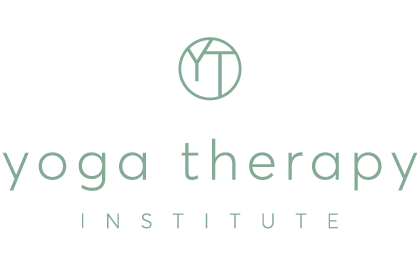How to Structure a Yoga Therapy Session – by Dr Timothy McCall
Setting up an effective yoga therapy interview, evaluation, and practice session is the first—and most crucial—step toward teaching your student to use yoga for rehabilitation.
A student comes to you needing more than just a class—it’s time to use yoga therapeutically. How do you address this need?
Master teachers can gather information so quickly, and are so experienced in dealing with multiple demands on their attention, that they can safely offer yoga therapy to students who are part of a large class. Many of these teachers also benefit from the help of one or more assistants who can carry out their directives.
For most mortals, however, a private or semiprivate yoga therapy session is a better choice. That will give you the time to interview the student, do an in-depth evaluation, plan a yogic intervention, and teach it to the student.
Yoga Therapy Interview and Assessment
To begin, you are going to want to talk with the student about the problem or problems that brought them to you. Find out what the symptoms are, when they began, and what makes them better or worse. Ask the student about other medical conditions they have, their history of surgery, and what medications they take, including over-the-counter drugs, vitamins, and dietary supplements. Also be sure to inquire about their prior experience with yoga and meditation, whom they’ve studied with, and whether they are currently practicing at home or taking classes. To efficiently gather the information you need, you may find it useful to devise a general questionnaire and review it with the particular student.
Good yoga teachers begin their assessment of students earlier than you might think. Again and again in my interviews with top yoga therapists, they’ve told me they observed minute details in the first moments they laid eyes on the student, before the official class or appointment had begun. These early moments, when the student is probably unaware of your scrutiny, allow you to observe habitual postures, movement patterns, and facial expressions unguarded.
Once the student knows you are watching, he or she may stand up straighter, smile more, or otherwise perform for you in a way that may obscure some information. Once the formal evaluation begins, it’s often useful to observe the student doing a few postures, if his or her condition allows it. In just a few minutes, you can begin to assess overall health, strength, stamina, flexibility, ability to follow instructions, quality of breathing, and how embodied the student is.
Formulating a Yoga Therapy Plan
When I watched B.K.S. Iyengar work therapeutically in medical classes in Pune, India, he often changed the plan on the fly, based on what he observed. He might have thought a particular pose would be beneficial, but as soon as he saw the student try it, he knew it was wrong. He’d immediately instruct the student to come out of the pose and try something else.
If a master like Iyengar can’t always correctly anticipate what is going to work, you shouldn’t expect to be able to either. Therefore, it is necessary to observe the student doing the entire practice you’re formulating, making any necessary adjustments based on what you see and what the student reports. Once you’re confident that the student can do the practice safely and effectively, you can feel secure giving it to them as homework.
Taking It Home
Daily practice is the key to success in yoga therapy. Students are much more likely to overcome dysfunctional patterns (samskaras) by learning new samskaras that can compete with them. When building strong new behavioral grooves, a little yoga every day is generally going to be more effective than longer, more infrequent, sessions.
Therefore, I believe it’s ideal to assign your students a short daily session of yoga as homework. While you might be tempted to try more, it’s generally most effective to give them bite-sized pieces that they can easily digest. As their abilities and interest in the practice grow, you can slowly increase the prescription. If appropriate, you might recommend that the students also attend a class—but stress that a class is not a substitute for home practice. And sometimes, especially in the case of yoga injuries, not attending class may be a necessary component of the recovery plan.
Follow Up
Whether return appointments are necessary will depend on the particular condition and the student’s interest. If the student returns, use this time to assess progress and modify the plan as needed. On repeat appointments, also be sure to ask how much the student has practiced between appointments. If it’s less than you had hoped for, it may be worthwhile to discuss obstacles to practice and how to overcome them.
The amount of time you’ll need for appointments will depend on how much material you intend to cover, how much yoga experience your client has, and the level of his or her overall health and fitness. An initial interview and evaluation might take 90 minutes or longer. Follow-up appointments might run 45 minutes to an hour.

